| |
The Unexpected and Dramatic Increase in Diversity on Top-50 Corporate BoardsWhy Did it Happen and What Does it Mean?by Richard L. Zweigenhaft, Guilford CollegeFebruary 2024[This article is also available as a PDF file.] Back in 2013, when I looked at diversity among Fortune 500 directors, I asked whether the diversity heyday had come and gone (Zweigenhaft, 2013). Since the 1960s and 1970s, there had been pressures to diversify from civil rights groups (like the Executive Leadership Council and the National Black MBA Association) and from women's groups (like the National Organization for Women and Catalyst). Moreover, by the 1980s the major corporations had built diversity programs and departments into their management structures for a variety of reasons, and as a result both the National Association of Manufacturers and the Business Roundtable rejected the efforts of the Reagan Administration to roll back the clock on diversity (see Zweigenhaft and Domhoff, 2014, pp. 111-116). However, by the mid-1990s, my research showed that the top 1000 boards were 98% white and 93% male, and as of 2011, 88% of the directors on Fortune 500 boards were white and 85% were male (Zweigenhaft and Domhoff, 1998; Zweigenhaft, 2013). I concluded that there was little evidence that things were changing very much or very fast. Ten years have passed, a decade that included the #MeToo and Black Lives Matter movements. In 2019, California passed legislation that required publicly traded corporations with headquarters in that state to include at least one woman on their boards by the end of 2019, and two women by the end of 2021 (Ortiz, 2018). More recently, however, there has been a Supreme Court decision against affirmative action in higher education and litigation against the practices some corporations use to address inequality. The states of Texas and Florida have passed legislation that bans public funds being spent on diversity, equity, and inclusion (DEI) initiatives in public higher education (Hassan, 2024). According to one writer, many big companies were "backing away from efforts to promote diversity, equity and inclusion in their ranks" (Telford, 2023a; see also Telford, 2023b, and Goldberg, 2024). It seems a good time to look again at the make-up of Fortune-level corporate boards. This time, I focus on the top 50 corporate boards, not the entire Fortune 500. There is good evidence that the larger boards have been more likely than the smaller boards to diversify. For example, in a 2004 report, the Executive Leadership Council found that 10.9% of the directors of the top 100 companies were Black, 9% were Black in the companies ranked from 101 to 200, 7.9% for the companies ranked from 201 to 300, 6.2% for the companies ranked from 301 to 400, and 5.5% for the companies ranked from 401 to 500 (Zweigenhaft and Domhoff, 2006, p. 101). In 2011, 69.1% of the directors in the top 100 companies were white men, 71.1% in the companies between #101 and #200, 75.6% in the companies between #201 and# 300, 74.6% in the companies between #301 and #400, and 77.6% in the companies between #401 and #500 — clearly there was more diversity in the larger companies than in the smaller companies. This was also the case in the pipelines to the executive suite within the corporations that can lead to the CEO position. When I looked at the leadership teams of the Fortune 500 in 2020, I found that there were more Blacks in the larger than the smaller companies. For the top 200 companies, 4% of those on the leadership teams were Black; for the corporations ranked between 201 and 300, the percentage dropped to 2.1%; for the companies ranked between 301 and 400, the percentage was 1.9%, and for the companies ranked 401 to 500 the percentage was 1.1% (Zweigenhaft, 2021). Therefore, based on this research on the directors and leadership teams at Fortune 500 corporations, I have decided to look at the 50 largest companies in order to see what can safely be assumed to be the most diversity on boards within the Fortune 500. I used the top 50 companies for 2011 as my starting point, and then compared it with newly gathered data based on the corporate boards of the top 50 companies on the 2023 Fortune list. Had the heyday of diversity actually come and gone, or had there been an increase in the number of women, Asian Americans, Blacks, and Latinos on boards? For the new 2023 dataset, I coded the make-up of boards of directors of the top 50 companies on the 2023 Fortune list for both gender and for ethnicity (Asian Americans, Blacks, Latinos, and whites). As Domhoff and I have realized over the years in our attempts to track and understand the patterns of diversity in the power elite (Zweigenhaft and Domhoff, 1998, 2006, 2018), these categories are complicated and often require the addition of subcategories (e.g., within the group we initially simply called Asian Americans, we now look separately at those whose backgrounds are from East Asia and South Asia). For this report, I will continue to use the larger categories, but I will note when it is helpful to acknowledge subdivisions. (Now that gender is no longer so readily assumed to be binary, I want to acknowledge that some of the 595 directors on the Fortune 50 companies in the 2023 sample may not fall into the categories of men and women, but it was impossible to know that based on the photos I looked at and the biographical information I was able to gather on them). Table 1 below summarizes the results from the top fifty Fortune companies in the 2011 dataset and from my current look at the 2023 Fortune 50 companies.
Table 1 & Figure 1. Numbers and percentages of Fortune 50 seats held by Asian American, Black, Latino and White directors, 2011 & 2023
Before looking at the makeup of the Fortune 50 boards in 2011 and 2023, it is worth noting that in addition to the prestige of being on a Fortune board, and the opportunity to make contacts with people who might be useful in one's career, it is quite lucrative. In 2018, the average compensation for those who were directors on Standard & Poor's 500 companies was slightly over $300,000 (Fontinelle, 2023). When Nikki Haley, the former governor of South Carolina and representative to the United Nations, and, as I write this, a challenger to Donald Trump for the Republican nomination for President in 2024, needed money, she joined the board at Boeing, which paid her more than $250,000 in 2019. As Stanley-Becker (2023) of the Washington Post explained: "A person who served on the board with her, and spoke on the condition of anonymity to discuss private corporate matters, said she was a valuable asset not only because of her support for Boeing when she was governor of South Carolina but also because of her time at the United Nations. The aerospace manufacturer generates 80 percent of its commercial airplane revenue overseas." Haley left the Boeing board, but she subsequently joined the board of Great Southern Homes, a major home builder, and she became an advisor to a venture fund called Prism Global Management, which paid her more than $700,000 in 2022. Three major conclusions can be drawn from the data in Table 1. First, whereas 84.1% of the directors in the 2011 sample were white, by 2023 that figure had dropped to 73.6%. Second, although 79.8% of the 2011 sample were male, by 2023 that had declined to 65.3%. And third, by 2023 the total of the percentages for white women (24.1%), Blacks (15.1%), Asian Americans (6.1%) and Latinos (5.2%) was a whopping 50.5% — slightly more than half the seats held on these boards (the total was 32.7% in 2011). These are not trivial changes, and they were unanticipated, so I will return to this issue later in this article. These patterns are corroborated by data in a report published by an executive search firm, Spencer Stuart, based on the directors of Standard & Poor's top 500 companies, titled, "2023 S&P 500 New Director and Diversity Snapshot" (Stuart, 2023). The Fortune 500 is a ranking of companies in the United States based on revenue. The Standard & Poors 500, on the other hand, is a list of the top 500 companies based on a stock market index determined by market capitalization. In looking at newly appointed directors from 2013 through 2023, they found that in 2013 only 39% of newly appointed directors were women and underrepresented minorities. In July 2013, the Black Lives Matter movement began in reaction to the acquittal of George Zimmerman, the man who murdered Trayvon Martin. Over the next nine years, the percentage of new diversity appointments to boards increased dramatically, from the 39% in 2013 to 60% in 2018, and to 86% in 2021. It then tapered off slightly, to 82% in 2022, and to 75% in 2023 (in each of these years, well over half were women). According to Bloomberg News (Bloomberg, 2023), in response to the Black Lives Matter protest many of the top S&P companies pledged to increase the numbers of minorities, including in leadership positions. As Bloomberg News explained, "about half the firms in the S&P 100, including Amazon.com Inc., PepsiCo Inc., Meta Platforms Inc. (then Facebook) and Microsoft Corp., set ambitious targets for increasing their share of people of color in leadership." The report went on to note that "Meta, Microsoft, Pepsi and Lowe's were among 39 firms that increased the number of Black workers across all the top, high-paying job categories: professionals, managers and executives." Along these same lines, a 2018 report by the Alliance for Board Diversity[1] (the "Missing Pieces Report: The 2018 Board Diversity Census of Women and Minorities on Fortune 500 Boards," 2018) showed that in the Fortune 100 and the Fortune 500 Board diversity had increased more between 2016 and 2018 than it had in the previous four years. More specifically, they found that for Fortune 500 boards, the percentage of women and minorities increased from 25.5% in 2010 to 26.7% in 2012, and then to 30.8% in 2016, and to 34% in 2018. It appears that in the years after the arrival of the Black Lives Matter movement, many of the country's largest companies committed to increase the representation of women and minorities in their management ranks and on their boards. To the extent that this was the case, the possible direct effects of protest movements on leadership patterns within large corporations appears to be a hypothesis worth further exploration. It is also likely that the tapering off of representation by women and minorities in 2022 and 2023 observed in the Spencer Stuart report has been related to the many legal and political challenges to affirmative action and diversity programs that have taken place in the past few years (some of which lead to the June 2023 decision by the Supreme Court to end affirmative action in higher education). But where, specifically, within these categories of race and gender have the changes taken place? What has been the nature of this increased diversity on the top 50 Fortune boards between 2011 and 2023, and what does it mean? A closer look at the percentages for white women, Blacks, Asian Americans, and Latinos will help answer those questions. White women131 white women held 139 seats on the Fortune 50 boards (eight were on two boards). There were almost as many white women directors as the number of Blacks, Asian Americans, and Latinos combined. All of the boards except one (Energy Transfer, #43) had at least one white woman. The average number of white women on these boards was 2.8. Three boards had five or more women: Microsoft (#15) and General Motors (#21), which both had five, and Citigroup (#36), which had seven. Notably, two of these companies had women as CEOs (Mary Barra of GM and Jane Fraser of Citigroup), and the third was led by a man born in India (Satya Nadella of Microsoft). We will return below to the question of whether companies with "diversifier" CEOs (those who are not white men) are more likely to have boards that are diverse in terms of gender or ethnicity. These women were quite well educated. All of them had undergraduate degrees, and almost two-thirds (65.5%) had advanced degrees, including MBA degrees (34%), law degrees (8.6%), PhDs (8.6%), as well as a few with medical degrees. Almost one-fourth had degrees from Ivy League schools, and about the same number had degrees from other prestigious schools (Chicago, Georgetown, Mt. Holyoke, Stanford, Williams), and some (about 10%) had attended schools in other countries (such as Oxford and Cambridge in England, Ecole Central in Paris, and Hebrew University in Israel). Notably, about a third had no advanced degrees. Many of these women graduated from college with a BA and went straight into the corporate workforce, often with degrees in business, accounting, or economics. For example, Sharon L. Allen, who sits on the board of Bank of America (#32) is the great-granddaughter of one of Idaho's first women legislators, according to one account, "earned a bachelor's degree in accounting from the University of Idaho, and promptly interviewed with all eight of the Big Eight accounting firms" (she took a job with the company that became Deloitte and Touche). Many of the white women directors are also current CEOs. For example, Mary Barra, the CEO of GM (#21), is not only on that board, she is also on the board of Disney (#48). Gail K. Boudreaux, the current CEO of Elevance (#22), is also on the board of Target (#33), and Carol Tome, the CEO of United Parcel (#37), is also on the board of Verizon (#26). In addition, many of the white women are former CEOs of Fortune 500 companies. Angela Braly, the CEO of Wellpoint from 2007 to 2012, is on the board of Exxon Mobil (#3). Marilyn Hewson, the CEO of Lockheed from 2013 to 2020, is on the board of Chevron (#10). Marissa Mayer, the CEO of Yahoo from 2012 to 2017, is on the board of Walmart (#1). Beth Mooney, the CEO of Keycorp from 2011 to 2012, and again from 2017 to 2020, is on the board of Ford Motor (#19). Anne Mulcahy, the CEO of Xerox from 2001 to 2009, is on the board of Johnson & Johnson (#40). I could give many more examples. Blacks
Blacks made up about 13.6% of the US population in 2023. As can be seen in Table 1, in 2023 15.1% of the Fortune 50 directors were Black. They were, therefore, slightly over-represented, in contrast to Asian Americans (6.1%, though they make up about 7.1% of the population), Latinos (4.3%, who make up 18.9% of the population), or white women (24.8%, who make up 30.9% of the population). Notably, a 2022 McKinsey study of 53 corporations, most of which were Fortune 500 companies, found that there were far fewer Blacks in the pipeline leading to the CEO office (managers, vice presidents, and those on the leadership teams) than on the boards (Copeland et al, 2022, p. 18).[2] This suggests that these companies want their boards to be (or maybe to look) diverse even if they have not diversified the executive ranks of their companies to a comparable extent. Black men
In 2011, Black men held 46 of 618, or 7.4%, of all the seats on the boards of the Fortune 50. In 2023, they held 53 of 576, or 9.2% (a noteworthy increase from 2011). These 53 seats were held by 47 Black men (four men held two seats each, and one held three). Those who held two seats were Eric D. Mullins (Valero, #18, and Conoco, #49), William E. Kennard (Ford, #19, and AT&T, #30), Derica Rice (Target, #33, and Disney, #48), and Marvin R. Ellison, the CEO of Lowes (#39), not only sat on that board but also was on the FedEx (#41) board; Wayne M. Hewett, born in Jamaica, as one biographical account puts it, to "a family of educated professionals," and with undergraduate and graduate degrees in industrial engineering from Stanford, was on three of the Fortune 50 boards (Home Depot, #20, United Parcel, #37, and Wells Fargo, #47).
Most of the Black directors in 2023 were born in the United States, but eight were born in the West Indies and two were born in Nigeria (about one in ten blacks were born in other countries, so this is more than twice as many as one might expect). More specifically, five were born in Jamaica, one in the Bahamas, and one in Trinidad, two in Nigeria, and one in Vietnam (his mother is Vietnamese, his father Jamaican). Obviously the term African American therefore does not apply to almost a quarter of the Black directors in this 2023 sample.[3] Furthermore, these findings, as well as some findings about Asian Americans and Latinos to be discussed below, suggest that the diversity among Fortune 50 directors may indicate an international, cosmopolitan elite, well-educated men and women from around the world who now can be found in the United States corporate elite. This is a group with impressive educational credentials. Fully 80% of them have advanced degrees: 19 have MBAs, 11 have law degrees, three have PhDs, and three have medical degrees. Many attended Harvard and other Ivy League schools, as well as other highly selective schools like Carleton, Georgia Tech, and Williams. In previous research, when we looked at the 17 African American men who had become CEOs of Fortune 500 companies by 2018 (Zweigenhaft and Domhoff, 2018, pp.101-103), we were struck by how many had been high school or college athletes. Although many high school and college athletes have not attained the education needed to succeed in life outside athletics, we concluded that participating in sports, and especially team sports, has been an important stepping stone for many who have become CEOs of major corporations. This not only is the case for men, but since the passage of Title IX, it has been the case for many of the women who have risen to the highest levels of the corporate world (Zweigenhaft & Domhoff, 2018, pp. 52-55). Gail Boudreaux, the CEO of Elevance Health (#22), was a three-year starter and the team's leading scorer in basketball at Dartmouth, and also won four straight Ivy League shotput titles. Sarah London, the CEO of Centene (#25), played varsity tennis as an undergraduate at Harvard.
The biographical accounts of the Black men who were Fortune 50 directors in 2023 revealed that many had participated in sports. For example, Rodney Slater, a director at Verizon (#26), and the former Secretary of Transportation under Clinton, was a football player at Eastern Michigan before going on to earn a law degree at Arkansas. Thomas Baltimore, on the board at Comcast (#29), went to Baldwin Wallace to play basketball before transferring to UVA from which he earned a BA and an MBA. David Grain, on the board at Dell (#34), played football and rugby and ran track at Holy Cross before going on to Dartmouth for an MBA. Peter Blair Henry, on the board at Citigroup (#36), was a wide receiver on the football team at UNC before attending Oxford as a Rhodes Scholar, and then MIT for a PhD in economics. H. James Dallas, a director at Centene (#25), went to the University of South Carolina, Aiken, on a basketball scholarship. The biographical information on some of the others indicates that they did not play sports at the college level, but were clearly involved in athletics. Russell Stokes, on the board at United Parcel (#37), was captain of the football and track teams at his high school in Cleveland. Fred Perpall, a director at FedEx (#41), born in the Bahamas, played on the 1994 national basketball team for that country. Black women
In 2011, Black women held 12 seats on Fortune 50 boards (1.9%). By 2023, Black women held 34 seats on the Fortune 50 boards (5.9% of all seats, more than three times the percentage in 2011, and thus a dramatic increase). Two were on two Fortune 50 boards: Edith W. Cooper, a former Executive Vice President at Goldman Sachs, with a BA from Harvard and an MBA from Northwestern, was on the boards of Amazon (#2) and PepsiCo (#46), and Kathleen Wilson-Thompson, a former senior vice-president at Walgreens, with a BA from Michigan and a JD from Wayne State, was on the boards of McKesson (#9) and Tesla (#50). The Black women in this sample have even more impressive educational credentials than the Black men. Fully 29 of the 32 earned higher degrees, including 13 MBAs, two other master's degrees, ten law degrees, two PhDs, and two medical degrees.
Nine have degrees from Harvard, and nine of the others have degrees from other Ivy League schools. Those with no Ivy League degrees have degrees from other prestigious schools, including Georgetown, Michigan, Northwestern, Stanford, and Wellesley. Many, like Edith Cooper and Kathleen Wilson-Thompson, are, or have been, executives at major corporations. Three have been college presidents: Valerie M. Rice, a director at United Health Group (#5), has been the President at the Morehouse School of Medicine since 2014; Alecia Ann Decoudreaux, a director at CVS (#6), was the President of Mills College from 2011 to 2016; and Wanda M. Austin, a director at Chevron (#10), a former President and CEO of the Aerospace Corporation, also served as the interim President at the University of Southern California in 2018 and 2019. Asian AmericansAccording to the Pew Research Center, Asian Americans make up about 7% of the American population, a figure that has roughly doubled since 2000. The largest ethnic origin group is Chinese Americans, with Indian Americans the second largest. As can be seen in Table 1, the percentage of Fortune 50 directors increased from 1.8% in 2011 to 6.1% in 2023. The Asian Americans, therefore, continue to be underrepresented, but not by very much; they have, however, more than tripled their representation since 2011. Notably, in the McKinsey study, Asian Americans were over-represented in the higher corporate ranks (14% of Managers, 12% of Senior Vice Presidents) but under-represented on the boards of the companies they looked at (4%). In contrast to the pattern for Blacks, the companies seemed quite willing and able to include Asian Americans in the senior management levels, but less willing or able to include them on their boards (Copeland et al, 2022, p. 18). Asian American menIn 2011, there were nine Asian American men on Fortune 50 boards (1.5%). By 2023 there were 20 Asian American men among the 576 directors (3.4%). Strikingly, 17 of the 20 were of Indian heritage — 14 were born in India, one was born in Ethiopia and then his parents moved back to India when he was five years old, and three were born in the USA to Indian American parents. Only three were of East Asian origins — one Korean American, one Japanese American (born in Kyoto) and one Chinese American (born in China). Jackson G. Lu and his colleagues suggest that the presence of South Asians and the near-absence of East Asians in positions of leadership in corporate America are the result of two characteristics of East Asian cultures. The first is the tendency on the part of East Asians to discourage assertiveness. The second is what they refer to as "ethnic homophily," by which they mean the tendency of East Asians to socialize primarily with other East Asians (South Asians, they argue, are more likely to socialize with people from different ethnic backgrounds); see Lu, Nisbett, & Morris, (2020) and Lu (2022). Asian American womenAsian American women held 15 of the seats on Fortune 50 boards in 2023 representing 2.6% of the sample (this was a five-fold increase over the percentage in 2011, when only two directors, 0.4% of the Fortune 50 directors, were Asian American women). Whereas 80% of the Asian American men were of Indian background, this was the case for only six of the 15 Asian American women (five were born in India, and the other was born in the USA to Indian immigrant parents). Seven of the 15 were of Chinese background — three were born in China, one in Toronto, one in South Africa, one in Texas, and one in Alabama. The other two Asian American women were Raquel Bono, on the board of Humana (#42) and Bahija Jallal, on the board of Elevance Health (#22). Bono, a physician who is a Vice Admiral in the Navy (her father was also a physician, and was also in the Navy), was born in the Philippines but moved with her family to Minnesota at the age of seven. Jallal, who holds a PhD in physiology from the University of Paris, and did a post doc at the Max Plank Institute, was described in a Financial Times article as a "researcher turned CEO" (Kuchler, 2022); she was born and raised (by a single mother, along with five siblings) in Morocco. These findings on Asian American men and women suggest a distinct international (and cosmopolitan) component to those overseeing America's largest corporations. They have impressive educational credentials, with undergraduate degrees from prestigious schools in America (e.g., Yale, Stanford, Mt. Holyoke) and abroad (e.g., the Indian Institutes of Technology, or IIT), and master's degrees from Yale, Cornell and Stanford. Two of the 12 have PhDs and two have medical degrees. Latinos/Hispanics(NOTE: For the remainder of this report, I will use the term Hispanics to refer to both the men and women in this group, and I will use Latinos to refer to men, and Latinas to refer to women). Hispanic Americans, who make up about 19% of the US population (and 17.8% of the population 16 years of age and older), were very much underrepresented in both Fortune samples. In 2011, 29 of the seats on the top 50 Fortune boards were held by Hispanics, 4.7%, and by 2023 that number had increased only to 30 seats, or 5.2%. The McKinsey study found a steady drop in the percentages of Hispanics in management, starting at 11% at the entry level, and reaching 5% at the executive level; they found that there were 5% on the boards of the companies they looked at (Copeland et al, 2022, p. 18). Latino men
In 2011, Latinos (that is, Hispanic men) held 22 seats on the Fortune 50, or 3.6%. Twelve years later, in 2023, 18 seats were held by 17 Latinos on the 2023 Fortune 50 boards — Cesar Conde, whose father was Peruvian and whose mother was a Cuban American, held seats on both Walmart (#1) and PepsiCo (#46). These 18 seats, 3.1% of the sample, represented a decline from the 3.6% of the seats held by Latinos in 2011. This can only be seen as a striking lack of progress for Latinos on Fortune boards — especially when, as noted, about 18% of the total population in the USA 16 years of age and older is Hispanic. These 17 men, or their parents, were born in countries throughout the Spanish-speaking world: Peru, Cuba, Puerto Rico, Argentina, Portugal, and Spain (one was born in Jamaica). Although many have degrees from elite schools in the USA (five have degrees from Harvard, two from Stanford, one from Yale) and in other countries (such as the Buenos Aries Institute of Technology in Argentina), and six have MBA degrees, this group differs from the others in that seven of the 17, or 41%, have bachelor's degrees but no advanced degree. Latina women
In 2011, only seven Latinas held seats on Fortune 50 boards (1.1%). By 2023, 12 seats on the Fortune 50 boards were held by ten Latinas (2.1% of the sample, so an increase from 2011, albeit a small one). Two sat on two boards each: Denise L. Ramos, the former CEO of ITT, sat on the boards of Phillips 66 (#17) and the Bank of America (#32), and Monica Lozano, who left Cuba in her childhood and whose father was appointed the ambassador to El Salvador by Gerald Ford, sat on the boards of both Bank of America (#32) and Target (#33). Seven of the ten have advanced degrees (four have MBAs). One, as noted, was born in Cuba, one in Argentina, one in Brazil, one in Mexico, and one in Puerto Rico (and another was born in Brooklyn to Puerto Rican parents). Diversifier CEOs and diversifiers on boardsAs noted above, two of the three Fortune 50 companies with the highest number of white women on their boards had women CEOs, and the other CEO was a man born and educated in India. This raised the possibility that the 14 corporations with diversifier CEOs might be more diverse than the other 36 companies with white male CEOs. The fourteen companies with diversifier CEOs consisted of six with white women CEOs, three companies with Indian men, three with Latinos, one with a Latina, and one with a black man. The fact that 28 percent of the CEOs of the top Fortune companies were diversifiers is in itself quite noteworthy: in the year 2000, 48 of the top 50 companies on the Fortune list were white men; a decade later, in 2010, 46 of the CEOs of the top 50 on the Fortune list were white men. So the drop in the percentage of white male CEOs from 96% in 2000, to 92% in 2010, and then to 72% in 2023 is dramatic.[4] In order to see if the boards of these 14 companies with CEO diversifiers differed from the 36 companies led by white men in terms of their gender and ethnic make-up, I compared them in two ways. First, to look at gender, I looked at the percentages of their boards that were female. For the 14 boards that had diversifier CEOs, 40% were female, and for the 36 companies with white male CEOs, 32.4% were female (a difference that is statistically significant at the p < .001 level). Then, to look at ethnicity, I totaled the number of Blacks, Asian Americans, and Latinos on each board, and divided that number by the number of seats on each board, to see what percentage of each board was nonwhite.[5] For the 14 companies with diversifier CEOs, it was 30%; for the other 36 boards, with white men as CEOs, it was 23% (this difference approached statistical significance, p < .07). I then combined the data for ethnicity (Blacks, Asian Americans, and Latinos) with the data for white women (providing what might be considered a total diversity measure), divided the total for each board by the size of the board, and again compared the two groups. The average percentage of diversity directors for the companies with diversifier CEOs was 60, and the average for the other 36 was 45 (this difference was also statistically significant, p < .001). The companies with diverse CEOs, therefore, are more likely to have boards with more white women, and with more nonwhites. It is not clear if more diverse boards are more likely to select women and nonwhites as CEOs, or if the companies with women and nonwhite CEOs are more likely to add diversifiers to their boards, or both (my guess is that the correct answer is both). The four companies with the most diverse boards were Fannie Mae (#28), at 75%, McKesson (#9), at 73%, Kroger (#24) at 70%, and General Motors (#21), at 69%. The four companies with the least diverse boards were Energy Transfer (#43), at 11%, Marathon Petrol (#16) at 18%, Berkshire Hathaway (#7) at 20%, Tesla (#50) at 25%. Corporate boards, now vs. thenIt is still the case that the vast majority of corporate directors at the top 50 Fortune companies are white (84.1% were white in the 2011 sample, and 73.6% in 2023). However, this decline from 84.1% to 73.6%, is both noteworthy and was unanticipated. It appears that the increase in women and other non-white men (those we might think of as "the diversifiers"), and the corresponding decrease in the number of white men, is at least in part the result of the new disruptive pressure that came from the Black Lives Matter movement, as well as ongoing media attention and lobbying of specific corporations from civil rights groups, women's rights groups, and the Black Congressional Caucus (Guynn, 2019). As was the case when we looked at the make-up of Fortune 500 CEOs over the two decades from 2000 to 2020 (Zweigenhaft, 2021), the two groups that showed the greatest increases in board representation were white women and men who were born, or whose parents were born, in India. Indeed, one of the striking findings in the current 2023 sample of Fortune 50 directors is how many of the Asian Americans were born in India, or had parents born in India. I was not able to obtain class backgrounds for the 2023 directors in a systematic fashion, though in some cases their economic privileges jumped out at me. For example, Penny Pritzker, the Secretary of Commerce in the Obama administration (with a BA from Harvard and both JD and MBA degrees from Stanford), on the board at Microsoft (#13), is from one of the wealthiest families in America (her father was a co-founder of the Hyatt Hotels). Alexandra Ford English, the daughter of the chair of Ford Motor (#19), and the great-great grandchild of the company's founder, a graduate of Stanford with an MBA from Harvard, is on the Ford board. Ornella Barra, born, raised and educated in Italy (according to Wikipedia, "into a family of entrepreneurs"), is on the board of AmerisourceBergin (#11). In the Wikipedia entry, under "Personal Life," there is just one sentence: "She is married to the Italian billionaire Stefano Pessina" (I guess that says it all). Our previous research on corporate directors and CEOs has shown that, despite the considerable publicity given to the exceptions, most of the white men and women who make it to the highest levels of the corporate world are from families in which the parents were well-educated professionals, those in the highest 15% of the class structure (often referred to as the upper middle class and the capitalist class; see Gilbert, 2015). In terms of race and class, therefore, it is safe to conclude that the majority of the Fortune 50 directors in 2023 were white men and women from privileged backgrounds, many originally from countries outside the United States, extremely well-educated, and, as I have noted, some are not just from the top 15% but quite wealthy. Our previous research also indicates that many of the Asian American and Hispanic directors came from economically privileged backgrounds. This is likely to be the case for many of the Indian Americans (the most frequent subgroup of the Asian Americans), and for many of the Hispanics who were born in — or to parents from — Spain, Argentina, Cuba, Peru and other countries throughout the Spanish-speaking world. (Notably, only one of the Hispanic directors was born in Mexico, and very few are from Mexican American backgrounds.) Therefore, the directors of Fortune companies, almost all of whom were white men from privilege in 2011, were in 2023 a more diverse group, with more women and more nonwhites, but still largely a very well-educated group raised with economic privilege, many originally from countries outside the United States. ConclusionsThe changes in the makeup of Fortune 50 boards during the last decade indicate that the disruptions that followed police killings of African Americans and the emergence of the Black Lives Matter movement contributed to an increase in board diversity. So, too, has the ongoing struggle for gender equality led to more and more well-educated women with proven leadership abilities in the business world. The increase in the number of Indian American men as CEOs and as board members, as well as the not inconsiderable number of board members who were born in countries around the world, reflects a growing international quality within the corporate elite. Moreover, our previous finding that many Fortune directors come from privileged class backgrounds appears still to be the case for the newly appointed directors, both those born in the USA and those born elsewhere Now that there is a larger cluster of women of all colors (200, or 34.7% — 24.1% white, 10.6% nonwhite), and a sizable number of nonwhite men (91, or 15.8%), both of which include some women and men who are extraordinarily wealthy, perhaps the decision-making processes within these boards will allow for a stronger commitment to diversity, a commitment that does not always need to be jump-started by protest movements like Black Lives Matter. If 28% of the Fortune 50 boards have diversifiers as their CEOs, and if 50.5% of board members are women of all colors and nonwhite males (291 of the 576 directors), then perhaps some of the ongoing motivation for gender and ethnic board diversity will come not only from outside the boards, but from within them. Although the increased diversity on corporate boards reflects the continuing efforts by a wide range of activist organizations to increase racial, ethnic, and gender equality in the United States, it does not necessarily follow that these corporations will act any differently on issues concerning profits and labor relations. As Domhoff and I wrote near the end of our 2018 book, Diversity in the Power Elite: Ironies and Unfulfilled Promises, "when we look at the business practices of the members of previously excluded groups who have risen to the top of the corporate world, we find that their perspectives and values do not differ markedly from their white male counterparts" (Zweigenhaft and Domhoff, 2018, p. 222). ReferencesAlliance for Board Diversity (2018). Missing Pieces Report: The 2018 Board Diversity Census of Women and Minorities on Fortune 500 Boards. https://www2.deloitte.com Bloomberg News (2023, September 26). Corporate America promised to hire a lot more people of color. It actually did. https://www.bloomberg.com Copeland, Chris; Hancock, Bryan; Soto, Sofia; Yee, Lareina; & Williams, Monne (2022). Race in the workplace: The frontline experience. McKinsey & Company. Fontinelle, Amy (2022, October 22). How much Board of Directors members get paid and what they do. Investopedia. https://www.investopedia.com Gilbert, Dennis (2015). The American Class Structure in an Age of Growing Inequality (9th edition). Thousand Oaks, CA: Sage Publications. Goldberg, Emma (2024, January 30). Facing backlash, some corporate leaders go "under the radar" with D.E.I. New York Times, B1. https://www.nytimes.com Guynn, Jessica (2019, April 12). Facebook nominates Peggy Alford, first African American woman, to its board of directors. USA Today. https://www.usatoday.com Hassan, Adeel (2024, January 1). New state laws on hot-button issues take effect today. New York Times. https://www.nytimes.com Kuchler, Hannah (2022, December 10). Immunocore's Bahija Jallal: "There was fantastic science but without financing we could not go anywhere," Financial Times. https://www.ft.com Lu, Jackson G.; Nisbett, Richard E.; & Morris, Michael W. (2020). Why East Asians but not South Asians are underrepresented in leadership positions in the United States. Proceedings of the National Academy of Sciences of the United States of America, 117(9), 4590-4600. https://doi.org Lu, Jackson G. (2022). A social network perspective on the Bamboo Ceiling: Ethnic homophily explains why East Asians but not South Asians are underrepresented in leadership in multiethnic environments. Journal of Personality and Social Psychology, 122(6), 959-982. https://doi.org Ortiz, Jorge (2018, October 1). California's 'giant step forward': Gender-quotas law requires women on corporate boards. USA Today. https://www.usatoday.com Penha-Lopes, Vania (2021). The Presidential Elections of Trump and Bolsonaro, Whiteness, and the Nation. Lanham, MD: Rowman & Littlefield. Stanley-Becker, Isaac (2023, December 22). When her family needed money, Nikki Haley found a lucrative path. Washington Post. https://www.washingtonpost.com Stuart, Spencer (2023, August). 2023 S&P 500 New Director and Diversity Snapshot. https://www.spencerstuart.com/research-and-insight Telford, Taylor (2023a, April 1). Critics of corporate diversity efforts emerge, even as initiatives falter. Washington Post. https://www.washingtonpost.com Telford, Taylor (2023b, December 27). 2024 might be do or die for corporate diversity efforts. Washington Post. https://www.washingtonpost.com/business Zweigenhaft, Richard L. (2013). Diversity among CEOs and corporate directors: Has the heyday come and gone? WhoRulesAmerica.net. Based on a presentation at the annual meeting of the American Sociological Association, New York City, August 12, 2013. https://whorulesamerica.ucsc.edu Zweigenhaft, Richard L. (2020). Diversity among Fortune 500 CEOs from 2000 to 2020: White women, hi-tech South Asians, and economically privileged multilingual immigrants from around the world. WhoRulesAmerica.net. https://whorulesamerica.ucsc.edu Zweigenhaft, Richard L. & Domhoff, G. William (1998). Diversity in the Power Elite: Have Women and Minorities Reached the Top? New Haven: Yale University Press. Zweigenhaft, Richard L. & Domhoff, G. William (2006). Diversity in the Power Elite: How it Happened, Why it Matters. Lanham, MD: Rowman & Littlefield. Zweigenhaft, Richard L. & Domhoff, G. William (2011; 2014). The New CEOs: Women, African American, Latino, and Asian American Leaders of Fortune 500 Companies, Lanham, MD: Rowman & Littlefield; paperback edition, with new introduction in March 2014. Zweigenhaft, Richard L. & Domhoff, G. William (2018). Diversity in the Power Elite: Ironies and Unfulfilled Promises. Lanham, MD: Rowman & Littlefield. Notes[1] The Alliance for Board Diversity is made up of four organizations: Catalyst, Diversified Research, The Executive Leadership Council (ELC), Hispanic Association on Corporate Responsibility (HACR), and LEAP (Leadership Education for Asian Pacifics). [2] Thanks to Richard Alba for alerting me about this publication. McKinsey provides the following information about the companies included in their study: "Participating companies represent many industries and include Bayer, Best Buy, Bloomin' Brands, BNY Mellon, Chevron, DaVita, Dell Technologies, Eaton, Google, Hess Corporation, Hilton, Impossible Foods, Marshfield Clinic Health System, McKinsey & Company, MetLife, Mondelez International, Neuberger Berman, NextRoll, The Procter & Gamble Company, Protolabs, Rich Products, Salesforce, Schneider Electric, Securian Financial, Swiss RE, Walmart, and WEC Energy Group." [3] For some of the Black men and women, the term Black may not capture the complexity of their ethnicity. Some of those born in the Caribbean, like the five black men born in Jamaica, may consider themselves, or be considered, Latino as well as Black, but, as I have no evidence of this, I am including them only in the category of Black. Frances de Souza, a director on the Disney board, was born in Ethiopia to a mother who was part Greek and part Ethiopian. His father was Indian. I am including him with the Asian American men. Once again it is necessary to stress that the ethnic categories I am using for this study are simply an effort to gauge changes taking place in terms of diversity, but the categories are broad-stroke, porous, and changing over time. [4] In 2000, the two CEOs who were not white men were Carly Fiorina of Hewlett-Packard (#13), and Franklin Raines of Fannie Mae (#26). In 2010, the four who were not white men were: Vikram Pandit of Citigroup (#12), Patricia Woertz of Archer Daniels Midland (#27), Angela Braly of Wellpoint (#31), and Indra Nooyi of PepsiCo (#50). [5] In an online presentation she made in February 2022, shortly after the publication of her book, The Presidential Elections of Trump and Bolsonaro, Whiteness, and the Nation, Vania Penha-Lopes, a Brazilian sociologist, pointed out that the term "people of color" implicitly suggests two things: first, that whites have no color, and, second, that white skin is the default, and all others (that is, those often called people of color) are somehow aberrant, deviants from the norm. In this paper, therefore, I have avoided calling Asian Americans, Blacks, and Latinos "people of color." This document's URL: http://whorulesamerica.net/diversity/unexpected_increase_in_diversity.html |
|||||||||||||||||||||||||||||||||||||||||||||||||||||||||||||||||||||||||
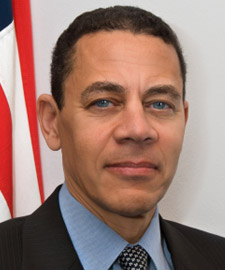
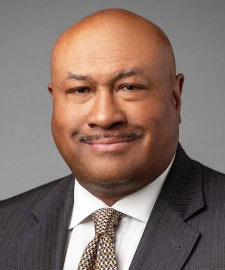
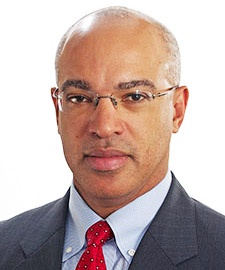
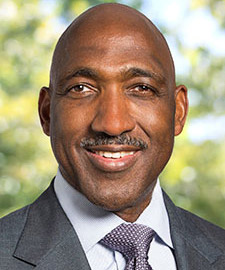
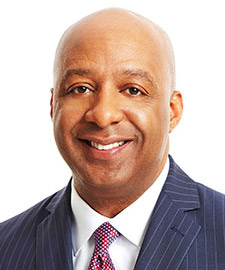
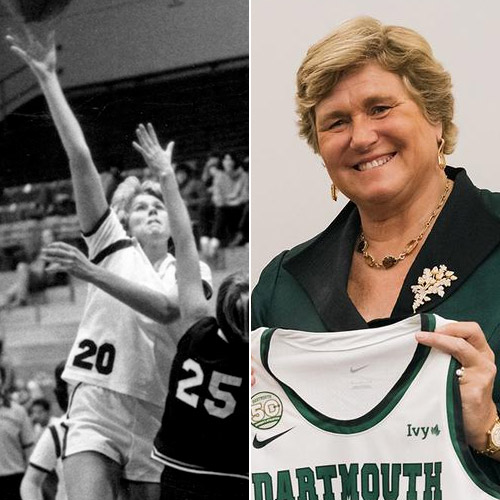
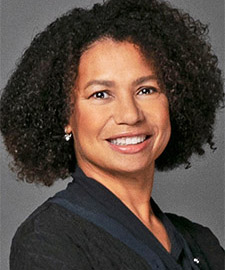
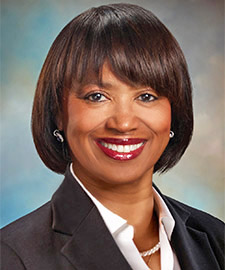
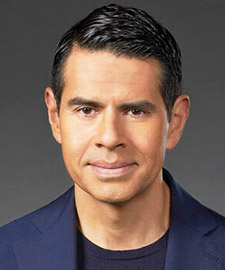
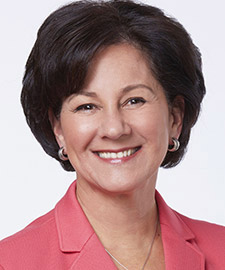
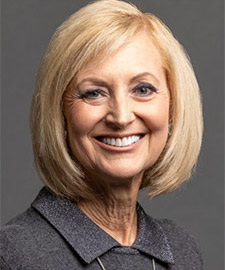
 mobile/printable version of this page
mobile/printable version of this page